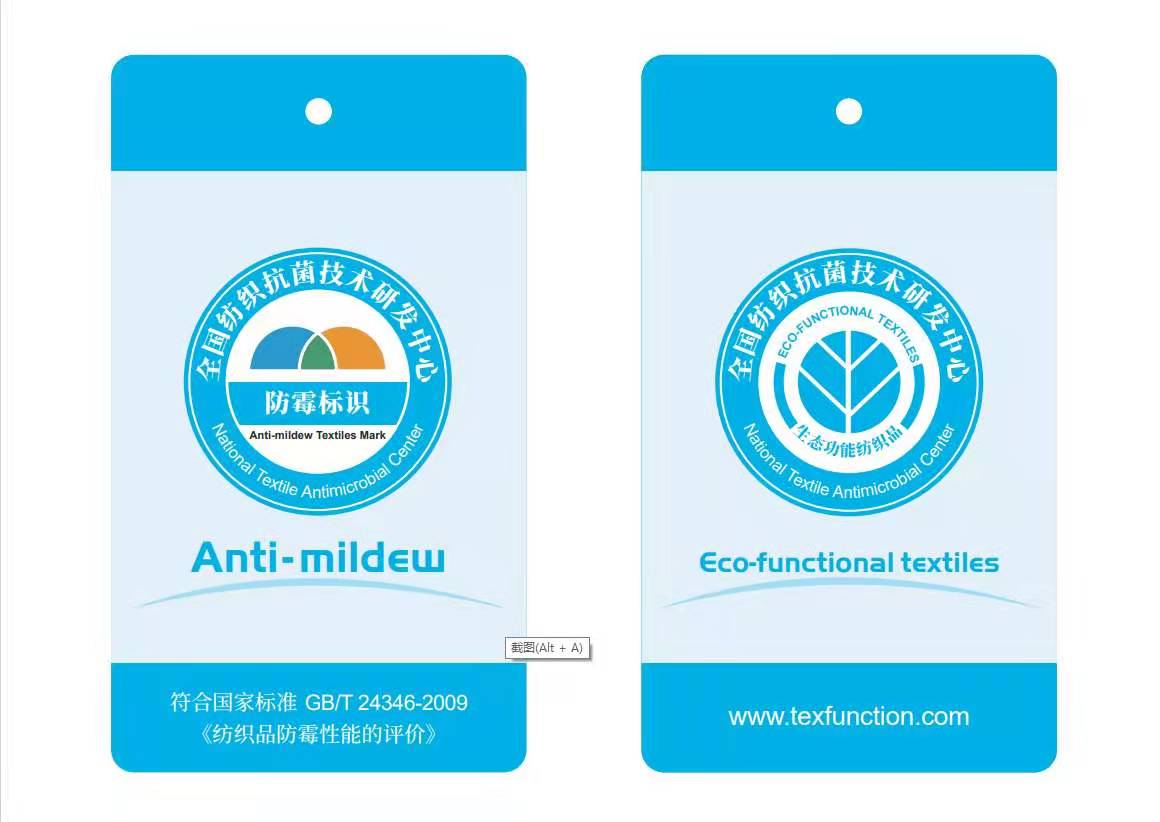
Beijing Jiershuang High-Tech Company is a manufacturer of antibacterial finishing agents. JLSUN® antibacterial finishing agents have been used in PLA 90 training shoes for 22 years. Our company has formulated GB/T 20944.1-2007 "Evaluation of Antibacterial Properties of Textiles", According to national standards such as GB/T 24253-2009 "Evaluation of Anti-mite Performance of Textiles" and GB/T 24346-2009 "Evaluation of Anti-fungal Performance of Textiles" and other national standards, Jiershuang Microbiology Laboratory provides customers with fabric anti-mite and antibacterial effects testing.
Antibacterial hygiene finishing expert Shang Chengjie senior engineer invented the antibacterial finishing agent SCJ-875 (organic nitrogen, "physical antibacterial") in 1987, and launched the antibacterial finishing agent SCJ-877 (organic silicon quaternary ammonium salt, "physical Antibacterial"). In 1989, the antibacterial finishing agent SCJ-891 suitable for polyester and nylon was successfully developed. In 1991, the antibacterial finishing agent SCK was invented. Afterwards, in response to the problems of the above-mentioned antibacterial finishing agent, after several years of hard work, the antibacterial and deodorant finishing agent SCJ-963 was finally developed in 1996. Experts from the Ministry of Health of the People's Republic of China, the General Logistics Department of the People's Liberation Army, and the Chinese Textile Engineering Society believe that the product is technically reliable and has important practical value for improving my country's health care level and the PLA's logistics support capabilities.
Product traits and technical indicators
Anti-mildew finishing agent SCJ-2001 has anti-mildew and deodorant effect. SCJ-2001 is inexpensive and easy to use. It is suitable for the mildew-proof finishing of cotton, wool, linen, polyester and their blended fabrics. SCJ-2001 is also suitable for the mildew-proof processing of feathers, leather, plastics and rubber. Such as the production of anti-mildew and deodorant shower curtains, carpets, wet wipes, non-woven fabrics, luggage fabrics, shoe fabrics, mattresses, interior decoration products, air filtration materials, etc.
China Medical Testing Center, German TUV and many other authoritative health organizations have tested and proved that: JLSUN® SCJ-2001 finishing fabric has anti-mold effect and durability, and meets the national standard GB/T 24346-2009 "Evaluation of Textile Anti-mold Performance", the United States The anti-mold grade specified by the Association of Colorists and Chemists Standard AATCC 30-2004 and the Japanese Standard JISZ 2911:2000 can prevent the growth of harmful bacteria such as Aspergillus niger, Penicillium, Trichophyton gypsum, Trichophyton rubrum, and does not contain formaldehyde , Heavy metals, aromatic amines harmful substances, in line with "GB 18401-2003 safety technical requirements for textile products".
Main technical indicators: The main component of the anti-mildew finishing agent SCJ-2001 is a non-ionic anti-mildew and antibacterial compound; the appearance is a light yellow transparent liquid, soluble in water, and the content of active ingredients is 40%; PH value is 6-7. The anti-mildew finishing agent SCJ-2001 can be miscible with softeners, coatings, pastes, waterproofing agents, resins, adhesives, antistatic agents and flame retardants, etc. The anti-mildew finishing agent SCJ-2001 can affect the whiteness of the fabric , Shade, strength, feel and breathability have no adverse effects, and have no adverse effects on the properties of softeners, waterproofing agents, antistatic agents and flame retardants.
Application process
Anti-mold finishing agent SCJ-2001 can be used to treat fabrics by padding, dipping, coating, and brushing. In the process design, the amount of anti-mold finishing agent SCJ-2001 is 3-4% (owf) of the fabric weight (that is, 3Kg to 4Kg SCJ-2001 is adsorbed per 100Kg of fabric), and the amount of thick and dense fabric is usually 3% (owf). Thin fabric 4% (owf), the specific amount depends on the type and purpose of the fabric to be treated.
Process conditions:
1. Pure cotton, silk wool, polyester cotton and other cellulose fiber fabrics
two dip and two rolling (with liquid rate 70%) —> pre-bake —> high temperature stenter (180±5℃, 40 seconds) —> finished product.
2. Polyester, nylon and other synthetic fiber fabrics
two dip and two rolling (with liquid rate 70%) —> pre-baking —> baking (180-185℃, 2 minutes) —> finalizing —> finished product.
Technical formula: Anti-mold finishing agent SCJ-2001 50-60g/L
Anti-mold catalyst SCJ-A 50-60g/L
Softening agent SCG 0-20g/L
Chemical material operation: (take the preparation of 100 liters of solution as an example): first add about 80 warming water (20-40°C) in the chemical material tank, then add 5-6Kg of SCJ-2001 anti-mold finishing agent, (and then add an appropriate amount of non Ion softener), then add 5-6Kg of SCJ-A anti-mold catalyst, and finally add water to 100 liters, and stir evenly.
Note: Anti-mold finishing agent SCJ-2001 stock solution has corrosive effect on the skin. Wear protective glasses and rubber gloves when using the anti-mold finishing agent SCJ-2001 to prevent the SCJ-2001 stock solution from contacting the skin and eyes. In case of accident, rinse immediately with plenty of cold water.
Package and storage: 25kg plastic drum, stored in a warehouse above 0℃, and the storage period is one year.
